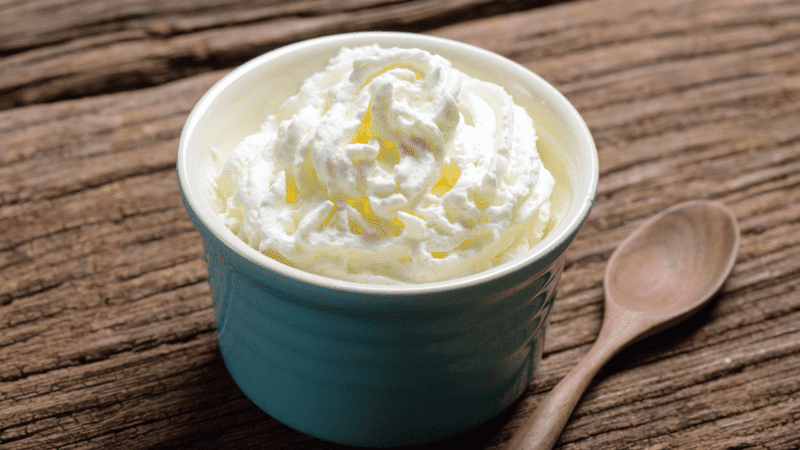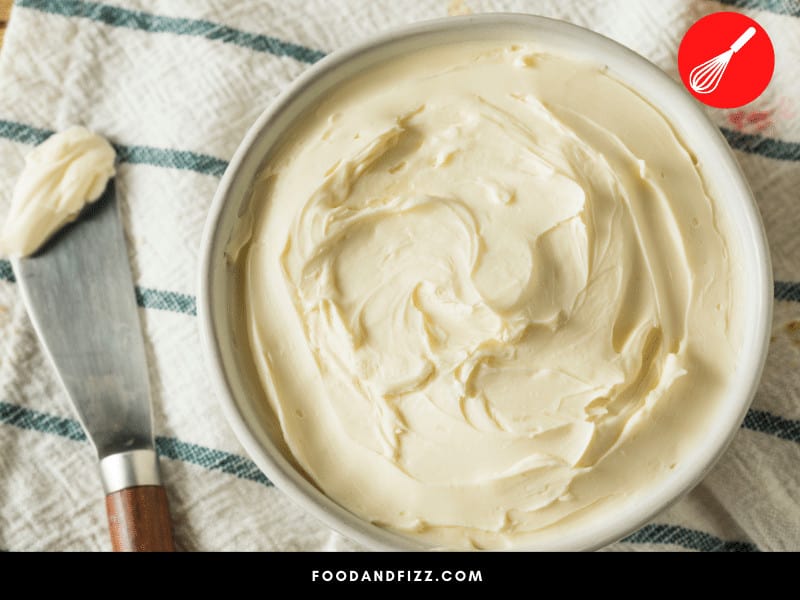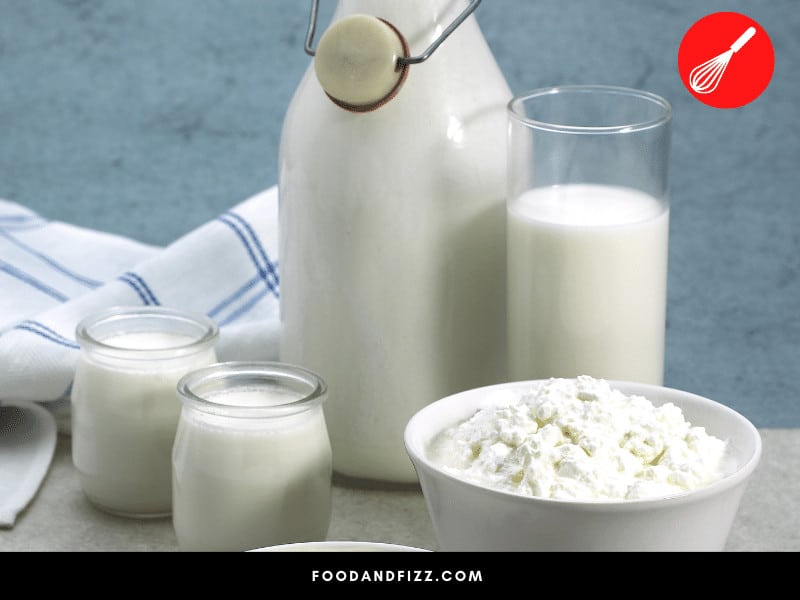The heavy whipping cream solidified in the fridge. Why is that? Baking or cooking with heavy whipping cream will surely add a rich, delicious texture and flavor to your meal.
Hundreds of recipes call for heavy whipping cream, ranging from specific sauces to frosting.
Though generally easy to work with, heavy whipping cream can throw the novice baker or chef a few curveballs here and there.
If you’ve ever rummaged through your fridge to pull out the heavy whipping cream to use in a recipe only to find that it’s no longer in liquid form, you may have found yourself searching for heavy whipping cream solidified in the fridge.
Trust me when I say you are not alone.
Luckily, finding your heavy whipping cream in a solid state doesn’t necessarily mean you have to throw it out. There are a few reasons for this phenomenon.
Heavy Whipping Cream Solidified In The Fridge
Heavy whipping cream will solidify in the fridge if the contents of the package settle and separate. This is incredibly common, and it’s a direct result of the mild fat solidifying on top. A solid layer on top of your heavy whipping cream will not affect its whipping properties, so as long as the expiration date has not passed, you can use it.

Chunks in heavy cream
If you see chunks in heavy cream, you can still consume it if it doesn’t smell off. Heavy cream gets chunky because the fat in it becomes butter. Once it smells sour, you can no longer eat it.
Contributors to Solid Heavy Whipping Cream
We all know that heavy whipping cream is not sold in a solid form.
You can find it in the dairy section next to traditional heavy cream, half and half, and it’s always liquid.
However, once you take it home, you might find that it has solidified when you take it out to use it.
Many people assume that a solidified dairy product that is supposed to be liquid should be thrown out, but this is not always the case.
When milk is curdled and sour, we throw it out, but solid doesn’t mean curdled, and heavy whipping cream has a few good reasons for morphing into a solid or partially solid state.
Separation
The most common reason heavy whipping cream solidifies is the milk fat separating from the rest of the cream.
When this happens, the fat will rise to the top and form a solid layer.
This will not affect how it whips or tastes in recipes, so as long as there aren’t any other issues such as chunks or smell, your heavy whipping cream is okay to use.
You can tell that solidification is the result of milk fat when the only part of the cream that’s solid is the top layer.
There could be another issue if it’s solid all the way through.

Low Refrigerator Temperatures
If your refrigerator temperatures are too low, you’ll notice that many things in your fridge are solid or frozen, not your heavy whipping cream alone.
How cold your fridge gets depends on the make and model.
Not every temperature dial is the same, so be sure to read your user manual if you don’t have your fridge in a high-temperature setting, but your items are still freezing.
In many cases, it’s the items at the back of the fridge that are most likely to freeze.

Butter
You might find that your heavy whipping cream has chunks when you pour it out, even though you’ve just purchased it.
As long as the cream doesn’t taste or smell sour, this is not a cause for concern.
These solid chunks are pieces of butter that have not been completely mixed in, and they will not affect how your cream tastes or behaves in a recipe.
Always use good judgment when you’re consuming dairy products. Just because an item has not passed the expiration date does not mean it’s good or okay to consume.
You can tell a lot by the smell, so if it doesn’t smell right, toss it out and go for a new one.
However, a solid layer or even chunks with heavy whipping cream is not an indicator of a product gone bad and for the most part, is completely normal.

How to Freeze Heavy Whipping Cream
If whipping cream gets very cold, it will start to freeze. Heavy whipping cream can be frozen, but the texture will change and ice crystals begin to form. It is a good practice to whip whipping cream before it freezes so the texture will be less chunky and crystallized once unfrozen.
Read more about freezing whipping cream in this article.
Frequently Asked Questions About Heavy Whipping Cream Solidified in Fridge
Because nobody wants to bake or cook with cream that’s gone bad, many people search for reasons that their heavy whipping cream has solidified.
Why is there a solid layer in my heavy whipping cream?
Heavy whipping cream forms a solid layer when the fat separates within and comes to the top. Naturally, fat kept in the refrigerator will harden, and you’ll end up with a layer of solid cream at the top of your container.
What should I do with my solid heavy whipping cream?
Unless it’s gone bad, throwing it out is unnecessary. Instead, use it in the recipe as normal, as a solid layer will not affect its whipping properties. If it’s frozen from a colder than a normal refrigerator, it may have difficulty getting fluffy when whipped. You can certainly try it, but you might need a new carton.
Using Solidified Heavy Whipping Cream
It’s okay to use heavy whipping cream in a solidified state as long as it’s fresh.
For the most part, solidification is a completely normal process for heavy whipping cream caused by the separation of fat. It will not make a difference to the way it tastes or performs within a recipe.

